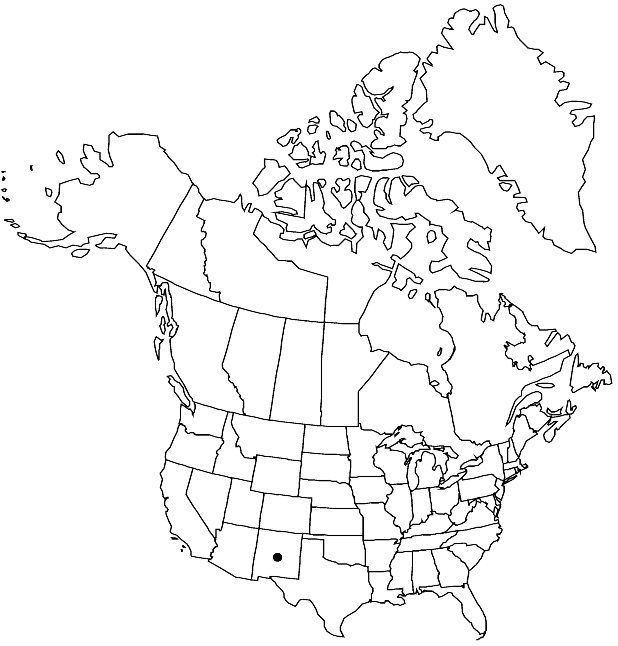Physaria lata
Novon 12: 325. 2002.
Perennials; caudex simple, (not thickened); densely pubescent, trichomes (short-stalked), several-rayed, rays distinct, furcate or bifurcate, (tuberculate, much less so over center, often nearly smooth on lower layer). Stems simple from base, spreading or erect, (unbranched), ca. 1 dm. Basal leaves: (petiole long, slender); blade elliptic to obovate, 3–4 cm, (base narrowing to petiole), margins entire. Cauline leaves (shortly petiolate); blade elliptic to obovate, 1–2 cm, margins entire. Racemes dense. Fruiting pedicels (sigmoid), 5–8 mm. Flowers: sepals narrowly elliptic or oblong, ca. 4.5 mm, (median pair thickened apically, cucullate); petals narrowly spatulate, 7–8 mm. Fruits (erect, substipitate), globose, ellipsoid, or obovoid, not or slightly compressed, 3–4 mm; valves sparsely pubescent, sometimes few trichomes inside; ovules 10–12 per ovary; style 3–5 mm. Seeds flattened.
Phenology: Flowering Apr–Jul.
Habitat: Limestone soils and rocky places, pinyon-juniper-oak woodland and montane coniferous forest
Elevation: 2100-2900 m
Discussion
Of conservation concern.
Additional research is needed to determine whether Physaria lata is a variant of P. pinetorum, with which it sometimes grows.
Selected References
None.
